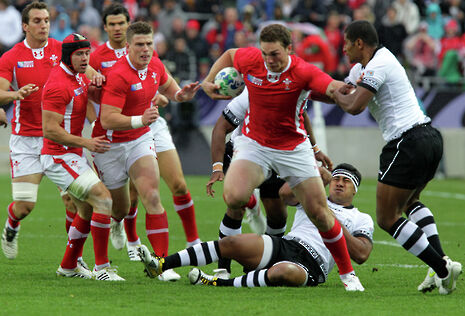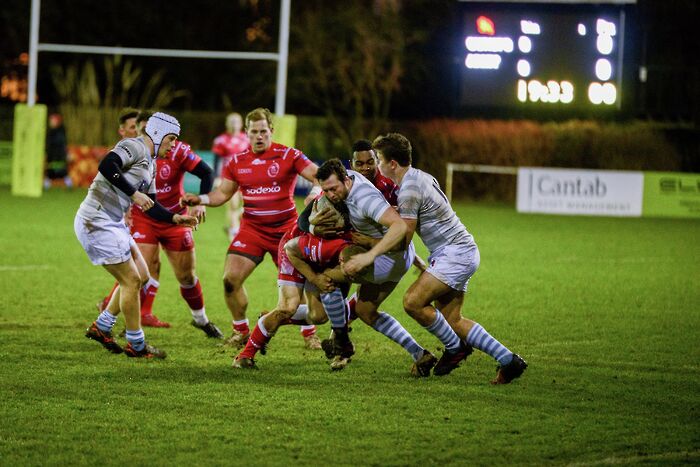Six Nations round-up: Round One
Wales shocked Scotland, France succumbed to tenacious Ireland, and England steamrolled Italy

The 2018 Six Nations has kicked off in typical style: Wales stunned Scotland, Ireland squeezed past France, and England dominated Italy. For an opening weekend, there was plenty of excitement, controversy and, unfortunately, four serious knee injuries.
Wales 34 – Scotland 7
A couple of apologies are in order. Firstly, to Wales, for writing them off. In truth, it may have been that Scotland made them look good, but their ability to throw the ball around, as Scarlets have all season, was impressive. Underestimated by many, the game finished with 24 points for Leigh Halfpenny, and a bonus point for Wales.
Secondly, I apologise to Scotland fans, for building expectation. The fact is, Scotland never really showed up. It was a poor performance which brought back memories of their last brush with expectation: at Twickenham last year. The score that day was 61-21 in England’s favour and, though the score-line in Cardiff was not so dramatic, the shock was much the same.
Their biggest problem was that they could not build any forward momentum. Without injured centre Alex Dunbar, the back row was asked to make the hard yards, but were largely anonymous; du Preez and Watson could make no breakthrough. And so, the Scots became very lateral, going side to side without much punch. Unforced errors in the few good positions that were fashioned, coupled with quiet performances from half-backs Ali Price and Finn Russell condemned the Scots to defeat. That said, Price and Russell should be retained for next week, as both possess significant attacking talent.
Ahead of France’s visit to Murrayfield, Scotland must tighten their defence – which was porous at times – and improve their scrum, which struggled in the second half. If they can get over the gain-line, there is no reason why they shouldn’t return to winning ways, but a big improvement is required.
Wales, though, have taken a huge step forward. With Dan Biggar injured, Rhys Patchell took his chance at fly-half, and played fearlessly. Indeed, that must have been the message from the coaches as, 1 through 15, they showed wonderful skills. Prop Samson Lee made offloads Fijians would be proud of, and Cory Hill showed why he’s a Lion. Wingers Josh Adams and Steff Evans played well, the latter scoring a superb try; returning Liam Williams will have to fight his way back into contention.
Nonetheless, Wales did not look the complete package. They took their opportunities against a poor Scotland side, but in defence there were occasional holes which a better team would have exploited. If England can get an edge up front, and stop Wales getting quick ball, there is no reason why they shouldn’t win comfortably.

France 13 – Ireland 15
This one went down to the wire and was won in the most incredible of fashions: 41 phases of play – starting in their own half – followed by a 45-metre Jonny Sexton drop-goal. Few instances of rugby compare.
And yet, I was not entirely surprised. As the Irish worked their way upfield, they looked so composed, powerful and determined, that you somehow knew they would win. In truth, it was a game they should never have lost. They were in control for most of it, but never put France away and, when Teddy Thomas scored an incredibly solo try on 71 minutes, they suddenly had it all to do.
It was a typical France vs Ireland game: tight, physical and niggly. Both sides defended well, but, on a wet Paris night, neither could cut loose, and they rarely looked like scoring tries. Indiscipline and inaccuracy meant both struggled to find much flow. France, though, have players like Thomas and Virimi Vakatawa who can conjure magical moments from nothing, so will always pose a threat, even if lock Sébastien Vahaamahina did try his best to lose it for them.
The French looked a decent side but will be disappointed by what looked to be serious knee injuries to their young half-backs, Matthieu Jallibert and Antoine Dupont, whose own joints could not cope with their stepping abilities. Ireland, the last two minutes aside, were disappointing, and have lost Josh van der Flier for the season to a similar injury.
However, the game was not without controversy. When Jallibert and Dupont were withdrawn, struggling to walk, they were declared ‘Head Injury Assessments’ which, in Dupont’s case, allowed them to bring back on their starting scrum-half. According to French medics, the head is located between the top of the calf and the bottom of the thigh. The HIA protocol is designed to protect the players, but its abuse amounts to flagrant cheating. In such incidents, the referee must be allowed to overrule the official match doctor, in the interests of common sense. Even if those players also required a HIA, they were not coming back on. It left a sour taste, after what was an extraordinary finish.

Italy 15 – England 46
Perhaps the most predictable result of the weekend, and one which will please both sets of fans. While the scoreboard reflects England’s dominance, there were also signs of great improvements from Italy, who were competitive for longer than I had anticipated. They put England under pressure at times, exploiting defensive weaknesses, and deserved their tries. It wasn’t until 12 minutes before time that the game was put to bed.
Italy are a largely inexperienced side, albeit that Sergio Parisse, Andrea Zanni and Leonardo Ghiraldini had 320 caps between them, but they showed better strength in attack and at the break down than in the past. Fullback Matteo Minozzi looked lively, centre Tommaso Boni proved a handful, and Tommaso Allan’s goalkicking was much improved. The scrum, however, seems to have weakened. It was a superb scrummaging performance from England, which maintained dominance even after substitutions were made, but the set piece is not the source of Italian strength it once was.
In the end, England were deserving of the score-line. The Ford-Farrell axis had perhaps its best outing to-date, as the two playmakers worked together in perfect harmony, running brilliant lines and making crisp passes. They finished with a try each and made stellar contributions in defence: Farrell leading the press, and Ford making impressive cover tackles.
Anthony Watson and Sam Simmonds scored braces, and both showed incredible turns of pace to do so. While we expect that from Watson, No.8 Simmonds stunned the Italian defence with his acceleration. There are few back-rowers in the world who would have scored his tries, and he also topped the tackle and carry stats. England’s bench, too, was a source of real strength, allowing them to power away in the final quarter. Indeed, some might argue they finished the game with a better back-line than they started.
Next week, I think Eddie Jones will stick with Ben Te’o at 13, as he did exactly what was asked of him, crashing the ball up to get England front-foot ball in the absence of Billy Vunipola. Unfortunately, Ben Youngs suffered a tournament-ending knee injury, which was horrible to watch. I have previously questioned Jones’ resistance to picking a third scrum-half, and it may now catch up with him. Wasps’ electric Dan Robson would have been my pick but, with such a short turn-around, Jones has brought in the experienced Richard Wigglesworth.
Injuries aside, England will need to tighten up in defence and at the breakdown. They were too often slow getting to breakdowns, as they were against Samoa, and allowed Italy to have 52% of territory and possession. They were also caught out for being narrow in defence for both Italy tries. However, most of their errors were individual ones and, if they can put those right, England should beat Wales comfortably
 Comment / Plastic pubs: the problem with Cambridge alehouses 5 January 2026
Comment / Plastic pubs: the problem with Cambridge alehouses 5 January 2026 News / New movement ‘Cambridge is Chopped’ launched to fight against hate crime7 January 2026
News / New movement ‘Cambridge is Chopped’ launched to fight against hate crime7 January 2026 News / Uni-linked firms rank among Cambridgeshire’s largest7 January 2026
News / Uni-linked firms rank among Cambridgeshire’s largest7 January 2026 News / Cambridge businesses concerned infrastructure delays will hurt growth5 January 2026
News / Cambridge businesses concerned infrastructure delays will hurt growth5 January 2026 Features / Who gets to speak at the Cambridge Union?6 January 2026
Features / Who gets to speak at the Cambridge Union?6 January 2026










